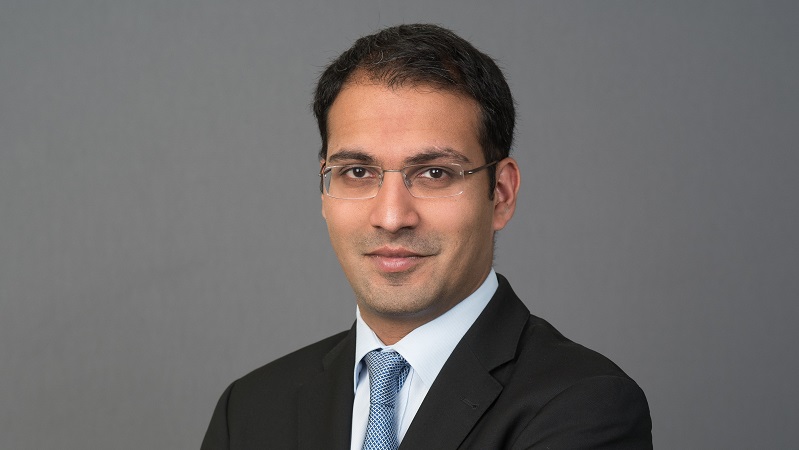Inflation looks set to hit double-digits in the coming months and investors are scrambling to figure out where best to put their money.
The industry’s stalwart 60/40 solution increasingly looks like its days are numbered. This leaves a whole host of more modern strategies to pick from, but many have only ever operated against a backdrop of benign inflation, meaning there is little to indicate how they will fare.
That said, Jason Hollands, managing director at Bestinvest, suggests there are some reasons to believe that the opportunity set for long/short strategies is improving.
Since the global financial crisis, asset markets have been turbo-charged by ultra-accommodative monetary policy in the form of near-zero interest rates and repeated rounds of vast money printing by central banks. This has generally lifted asset prices and also led to very high levels of correlations across stocks and bonds, Hollands notes.
“Such an environment has been a difficult one for absolute return funds to add value, as the wall of liquidity driving markets has arguably de-emphasised the importance of fundamental factors and stock selection, and high asset class correlation has reduced the scope for directional trades.”
Hollands argues that we are now in a very different environment where central banks are unlikely to come to the rescue of markets as they have done over the last decade.
He insists there are big differences between companies that are more resilient to higher borrowing costs or which have pricing power, and those vulnerable to these changes. “I believe security selection and fundamental factors are going to be a lot more important,” he says.
New market era requires a broader toolkit
Nabeel Abdoula (pictured), deputy CIO at Fulcrum Asset Management, agrees that a shift in emphasis is evident. “Prior to the pandemic, the last few decades have seen powerful disinflationary forces at play across the world, including globalisation, ageing populations, and technology disruption.”
He adds: “While the latter two will likely persist, we are now witnessing a global decoupling – a reversal in globalisation – that will result in less dependence on trade with China and on cheap gas from Russia. Both of these factors in particular are putting upward pressure on inflation. In such circumstances, building diverse investment portfolios – using flexible long/short strategies that focus on a broad range of performance drivers over a multitude of time horizons is key.”
Abdoula believes that higher-than-expected inflation, the end of quantitative easing, the increased need for sustainable investing, and political risk will persist.
“The last few months are only just the start of a meaningful shift from benign equity and bond markets. This may just be the beginning of a new era that requires a broader toolkit than traditional investing and the flexible long/short strategy should work well in this scenario.”
Flexible options
Luke Newman, portfolio manager of UK equities at Janus Henderson Investors, believes a flexible long/short strategy should be as comfortable in bear markets as bull ones, with a short book capable of operating as a profit-centre as much as a hedging tool.
“Every investment should be made with consideration of the downside risk. Such strategies, if managed correctly, should help to reduce the risk to capital during initial periods of macro uncertainty, and then shift to a position to capitalise from the subsequent market rebound – or variations in performance between different parts of the market”.
This ‘reduced risk’ point is something Hollands picks up on. “Absolute return is a really broad-brush banner which encompasses a very wide range of investment strategies and techniques.
“While many of these strategies have demonstrated their ability to deliver low volatility compared to wider markets, the weakness of many of these strategies has been the absence of meaningful real returns and so, understandably, many investors and advisers have lost faith in them and become particularly sceptical of those with performance fees.”
However, many absolute return funds have failed to protect in falling markets. Natixis H2O Multireturns Fund and Odey Absolute Return, which were among the biggest laggards in the IA Targeted Absolute Return (TAR) sector during the Covid sell-off in March 2020, did worse than half the 393 funds in the IA UK All Companies, UK Equity Income and UK Smaller Companies sectors.
Against the volatile backdrop of 2022, absolute return funds have delivered a measly total return of 0.1% on average, though this is better than the average fund in the IA Global (-9.3) and IA UK All Companies (-6.3%) sectors.
However, a decent chunk of the IA TAR sector is sitting on comparable losses to their pure-equity counterparts.
Worst IA TAR funds year-to-date (%)
| Thesis TM Neuberger Berman Absolute Alpha | -12.29 |
| Jupiter Flexible Macro | -11.11 |
| Baillie Gifford Multi Asset Growth | -10.73 |
| JPM Global Macro Opportunities | -10.39 |
| Baillie Gifford Diversified Growth | -9.76 |
| Schroder ISF Emerging Markets Debt Absolute Return | -8.93 |
| GS Global Absolute Return | -8.87 |
| BNY Mellon Sustainable Real Return | -8.52 |
| iMPG Absolute Return | -8.38 |
| Invesco Global Targeted Income | -8.33 |
Source: FE Fundinfo
Absolute return funds ‘flatter to deceive’
Fairview Investing’s Ben Yearsley is not impressed by either the performance or fees.
“These funds often flatter to deceive and don’t really add anything to a portfolio. They often make the fund manager rich though.
“They normally seem to perform well when the fund is small and nimble and at the first sign of serious money flowing in the performance appears to deteriorate.
“The problem is managers have to be good at both disciplines: finding good and bad companies. The problem with shorting is that the market can stay irrational longer than investors can stay patient – just ask James Clunie, ex-Jupiter, who was shorting Tesla for a long time.”
See also: End of an era for mega absolute return funds as investors pull billions during Covid crisis
Best of breed
Hollands agrees that effectively identifying both potential winners and losers is a significant challenge and that the jury is out on how many managers genuinely possess these skills.
He accepts that absolute return funds in recent times have seen some weak performers but picks out some of the stronger names.
“Of the multi-asset strategies, the JPM Global Macro Opportunities fund is worth considering. The process includes taking advantage of markets that have mispriced economic trends and movements.
“The team form a portfolio which consists of long and short positions in equities, fixed income, currencies and gold, with the team actively changing positioning to match their macroeconomic outlook. They also use derivatives where appropriate to protect the portfolio.”
There are also more traditional multi-asset products with an emphasis on capital preservation and real returns that Hollands likes, such as Personal Assets Trust, the Trojan Fund and Ruffer Investment Company, each of which invests in a blend of equities, index-linked bonds, gold and short-dated bonds and cash.
“The products don’t use more complex trading strategies or derivative overlays but have been effective in delivering ‘steady Eddie’ returns that won’t give investors a sleepless night,” he says.











